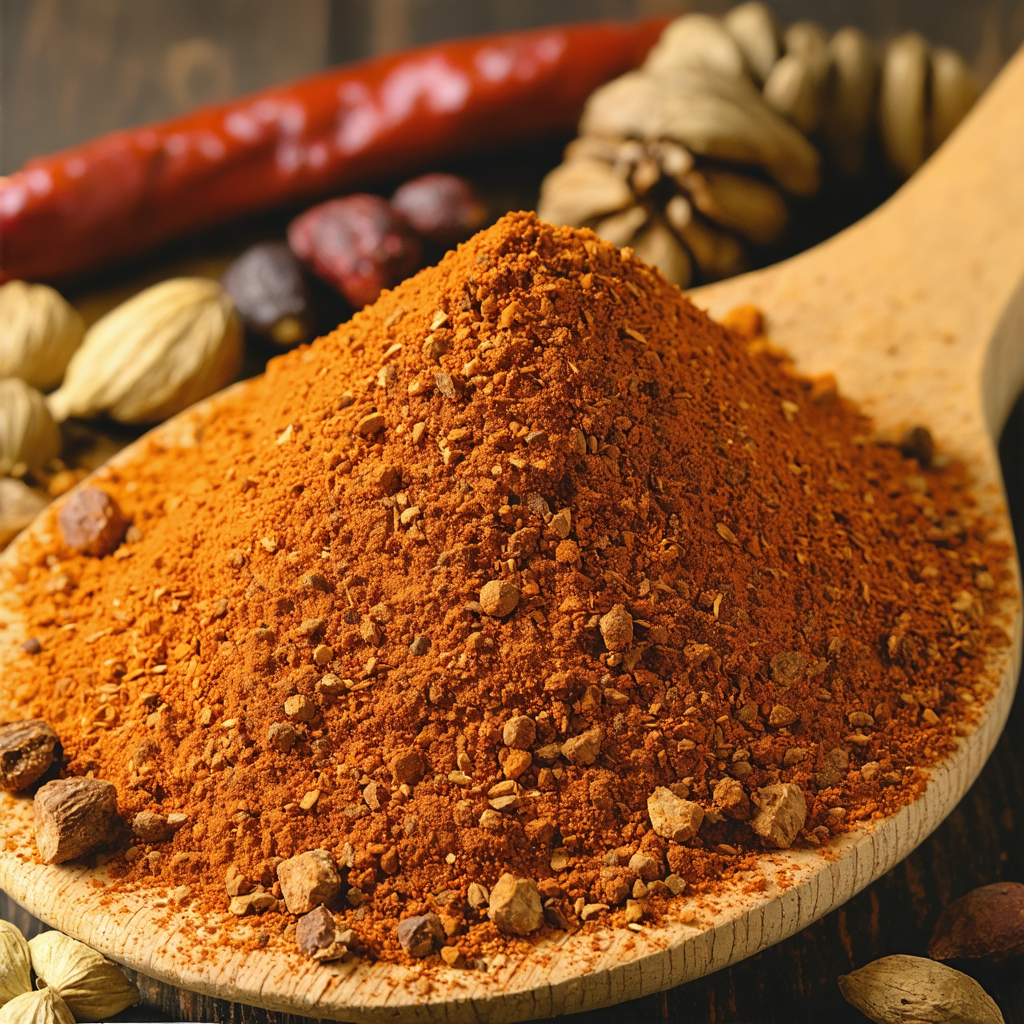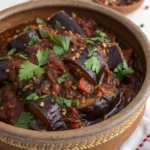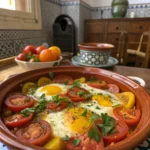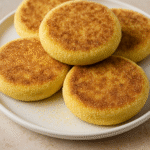The Best Fluffy Pancakes recipe you will fall in love with. Full of tips and tricks to help you make the best pancakes.
You know that moment when you’re standing in the spice aisle, completely overwhelmed by all the options? Yeah, I’ve been there too. But let me tell you about the day I discovered ras el hanout – it literally changed my entire approach to cooking.
I was wandering through a bustling souk in Marrakech a few years back (okay, fine, it was actually a Moroccan restaurant in my neighborhood, but the effect was the same!), when the chef mentioned this magical spice blend that would “transform any ordinary dish into something extraordinary.” Naturally, I was skeptical. I mean, how good could one spice mix really be?
Turns out? Pretty darn amazing.

What is Ras el Hanout? The “Top Shelf” Spice Blend Explained
Here’s the thing about ras el hanout – it’s not just a spice blend, it’s basically a whole spice cabinet compressed into one incredible mixture. The name literally means “head of the shop” in Arabic, which is basically saying “this is the best stuff we’ve got.”
And honestly? They’re not kidding around.
This North African powerhouse can contain anywhere from 10 to 40 different spices (some ambitious blends claim over 100!). We’re talking cardamom, turmeric, nutmeg, allspice, cumin, cinnamon – the works. Some traditional recipes even include exotic ingredients like ash berries, grains of paradise, and dried rosebuds.
The best part? No two blends are exactly the same. Each family, region, and spice merchant has their own secret recipe passed down through generations. It’s like having a little piece of culinary history in your spice rack.
The Rich History and Origins of Ras el Hanout
While ras el hanout has roots throughout North Africa, it’s most closely associated with Moroccan cuisine. You’ll also find variations in Algeria and Tunisia, each with their own regional twist.
What I love about this spice blend is how it represents the crossroads of trade routes that made North Africa so culturally rich. These weren’t just local spices – merchants were bringing in cardamom from India, cinnamon from Ceylon, and nutmeg from the Spice Islands. Ras el hanout is basically a edible map of ancient trade networks!
What Does Ras el Hanout Actually Taste Like?
Okay, so here’s where it gets interesting. Since every blend is different, the flavor profile can vary quite a bit. But generally speaking, you’re looking at something that’s warm, woody, and deeply aromatic.
The cinnamon and cloves bring sweetness, while the cumin and coriander add earthiness. Turmeric gives it that gorgeous golden color, and cardamom adds this lovely floral note. Despite what you might think, most ras el hanout blends aren’t actually spicy-hot, though some do include chili peppers for a gentle kick.
I always describe it to friends as “Christmas spices meets exotic bazaar.” It’s familiar enough to be comforting, but complex enough to keep you guessing.
Essential Ingredients for Homemade Ras el Hanout
While there’s no single “correct” recipe, here are the spices you’ll typically find in a good ras el hanout blend:
Core Spices (the non-negotiables):
- 2 tablespoons ground cumin
- 1 tablespoon ground coriander
- 1 tablespoon ground cinnamon
- 2 teaspoons ground ginger
- 2 teaspoons turmeric
- 1 teaspoon ground cardamom
- 1 teaspoon ground nutmeg
- 1 teaspoon ground allspice
- 1 teaspoon ground cloves
- 1/2 teaspoon black pepper
Optional Additions (for the adventurous):
- 1/2 teaspoon cayenne pepper
- 1/2 teaspoon ground fenugreek
- 1/4 teaspoon ground mace
- 1/4 teaspoon ground star anise
- Dried rose petals (just a pinch)
Step-by-Step Instructions: Making Your Own Ras el Hanout
Trust me, making your own blend is way easier than you’d think. Plus, your kitchen will smell absolutely incredible for hours afterward.
Step 1: Toast Your Whole Spices (Optional but Recommended)
If you’re using whole spices, give them a quick toast in a dry skillet over medium heat for 2-3 minutes. This really wakes up the flavors. Just keep them moving so they don’t burn – nobody wants bitter spices!
Step 2: Cool and Grind
Let toasted spices cool completely, then grind them in a spice grinder or coffee grinder until fine. If you’re using pre-ground spices, you can skip this step entirely.
Step 3: Mix and Blend
Combine all your spices in a bowl and whisk thoroughly. I like to sift the mixture through a fine-mesh strainer to catch any stubborn chunks.
Step 4: Taste and Adjust
Here’s where you make it yours! Too mild? Add more black pepper. Want it sweeter? Bump up the cinnamon. The beauty of homemade is that you’re in control.
Step 5: Store Properly
Transfer to an airtight container and store in a cool, dark place. It’ll stay fresh for up to a year, though honestly, you’ll probably use it up way before then.
Pro Tips for Ras el Hanout Success
Buy whole spices when possible. They stay fresher longer and give you way better flavor when you grind them yourself.
Start small. Make a small batch first to test your blend before committing to a huge quantity.
Label everything. Trust me on this one – write down your recipe! There’s nothing worse than creating the perfect blend and then forgetting what you put in it.
Toast thoughtfully. Not all spices need toasting. Delicate ones like cardamom and cinnamon can become bitter if overdone.
Creative Ways to Use Ras el Hanout in Your Cooking
Traditional Applications
The classic uses are absolutely worth trying. Rub it on lamb before grilling, stir it into tagines, or mix it with olive oil for a killer marinade. It’s also fantastic sprinkled over roasted vegetables – I’m talking sweet potatoes, carrots, cauliflower, you name it.
Modern Twists
But here’s where it gets fun – this stuff works in unexpected places too! I’ve stirred it into Greek yogurt with honey for an amazing dip. It’s incredible in roasted nuts (hello, fancy cocktail party snack), and don’t even get me started on ras el hanout popcorn. Game night will never be the same.
You can even use it in desserts! A pinch in apple cake or carrot cake adds this mysterious warmth that’ll have people asking for your secret.
Best Substitutes When You Can’t Find Ras el Hanout
Look, I get it – sometimes you need that Moroccan flavor RIGHT NOW and you don’t have time to hunt down exotic spices. Here’s what actually works:
Baharat is your best bet. It’s a Middle Eastern blend with a similar warm, complex profile.
Garam masala can work in a pinch, though it’s more Indian-leaning. It shares several key spices with ras el hanout.
Curry powder is hit or miss since recipes vary so much, but it can work for certain dishes.
Honestly though? None of these are perfect substitutes. Ras el hanout is pretty unique.
Serving Suggestions and Food Pairing Ideas
This spice blend plays incredibly well with:
- Proteins: Lamb, chicken, beef, fish (especially salmon)
- Vegetables: Root vegetables, eggplant, zucchini, tomatoes
- Grains: Couscous, rice, quinoa, bulgur
- Legumes: Chickpeas, lentils, white beans
Try making a simple weeknight dinner by tossing chicken thighs with ras el hanout, olive oil, and lemon juice, then roasting with whatever vegetables you have on hand. Boom – dinner that tastes like you spent all day cooking.
Storage Tips and Shelf Life
Like most spice blends, ras el hanout is happiest in a cool, dry place away from direct sunlight. I keep mine in a small glass jar in my spice cabinet, and it stays potent for about a year.
Pro tip: Write the date on your container! Spices don’t really “go bad,” but they do lose their punch over time. If your ras el hanout smells more like dust than like an exotic spice market, it’s time for a fresh batch.
Health Benefits of Ras el Hanout Ingredients
Okay, I’m not gonna sit here and claim this is some kind of miracle cure, but the individual spices in ras el hanout do pack some serious nutritional benefits.
Turmeric brings anti-inflammatory properties thanks to curcumin. Cinnamon might help with blood sugar regulation. Ginger is great for digestion. Nutmeg contains compounds that might help with sleep (though you’d need to eat a LOT of it).
The antioxidants alone make it worth incorporating into your regular cooking rotation. Plus, anything that makes healthy foods taste this good is a win in my book.
Frequently Asked Questions About Ras el Hanout
Q: Is ras el hanout spicy hot? A: Nope! Most blends are warm and aromatic rather than spicy. Some might include a touch of chili for heat, but it’s usually pretty mild.
Q: Can I use ras el hanout in sweet dishes? A: Absolutely! It works beautifully in cookies, cakes, and even ice cream. Start with just a pinch – a little goes a long way.
Q: How much should I use in recipes? A: Start with 1-2 teaspoons for most dishes serving 4-6 people. You can always add more, but you can’t take it back!
Q: Can I make it without certain spices? A: Of course! That’s the whole point – make it your own. Just try to keep the core warm spices (cinnamon, cumin, coriander) as your base.
Q: Where can I buy authentic ras el hanout? A: Most grocery stores carry it now, or you can find it at Middle Eastern markets, specialty spice shops, or online. Just read the ingredient list to make sure it’s not mostly salt and filler.
Final Thoughts: Why Every Kitchen Needs Ras el Hanout
Listen, I’ve tried a LOT of spice blends over the years, and ras el hanout is hands-down one of the most versatile and delicious ones in my arsenal. It’s like having a shortcut to complex, restaurant-quality flavors without any of the fuss.
Whether you buy it ready-made or take the DIY route, this North African treasure is gonna transform your cooking game. Start with the classics – a simple tagine or roasted vegetables – then let your creativity run wild.
Trust me, once you start cooking with ras el hanout, you’ll wonder how you ever lived without it. Your taste buds (and your dinner guests) will thank you!
Don’t forget to rate this recipe and share it with your fellow food lovers!





